Inscribed In the Human Heart
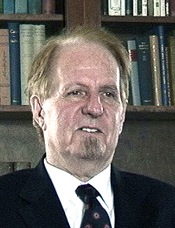
“The transcendent element of an inward Gnosis is indelibly inscribed in the human heart; all the trivialities of the everyday world due to inattention and consequent ignorance are unable to extinguish its remembrance.”
–Stephan A. Hoeller (Hungarian-born American Writer, Scholar and Religious Leader, 1931-)

“The Gnostic Jung and the Seven Sermons to the Dead (Quest Books)” (Stephan A. Hoeller)
Heal Others and Heal Yourself
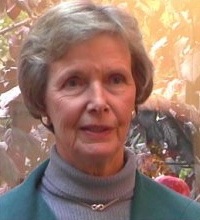
“If we open our hearts to the suffering of the world, the healer in each of us is called forth to manifest the qualities of love and compassion and relieve suffering wherever we find it. In our effort to heal others, we also heal ourselves.”
–Frances Vaughan (American Transpersonal Psychologist and Writer)

“Shadows of the Sacred: Seeing Through Spiritual Illusions” (Frances Vaughan)
Your Highest Light
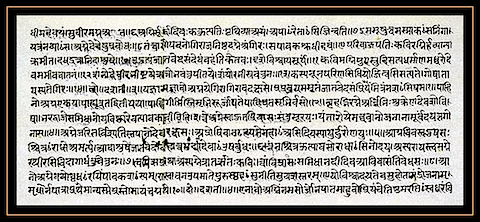
“There is a light that shines beyond all things on earth, beyond us all, beyond the heavens, beyond the highest, the very highest heavens. This is the light that shines in our heart.”
–Chandogya Upanishad (Ancient Hindu Commentaries on the Vedic Scriptures, Written between 1600 and 700 B.C.)
The Power of Your Heart

“Nothing is less in our power than the heart, and far from commanding we are forced to obey it.”
–Jean-Jacques Rousseau (Swiss-born French Philosopher, 1712-1778)
Heart, Mind and Soul
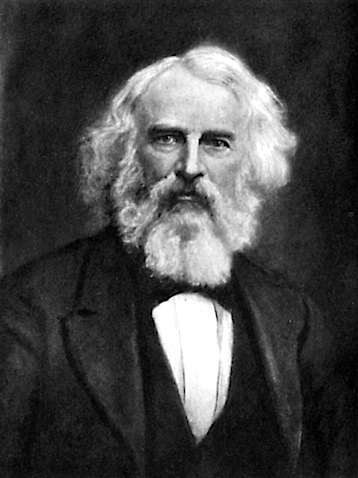
“The intellect of man sits visibly enthroned upon his forehead and in his eye, and the heart of man is written upon his countenance. But the soul reveals itself in the voice only, as God revealed Himself to the prophet of old in the still small voice, and in the voice from the burning bush.”
Henry Wadsworth Longfellow (American Poet, 1807-1882)
Dying of a Broken Heart
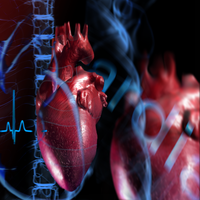
Some colleagues in London have discovered how intense stress may cause severe irregularities (arrhythmias) of the heart that could be fatal.
It has been known for some time that emotional trauma and psychological stress can precipitate cardiac arrhythmia and sudden death through over-activity of the sympathetic nervous system, the system usually associated with “Fight or flight.” It has also been known that people with preexisting heart disease are particularly at risk. This is one stereotype that is true: if someone with heart disease gets a bad shock, they may indeed die. It has been known for centuries that suffering a sudden unexpected bereavement can be a fatal stressor.
It is extremely important to understand how stress can affect the heart, and researchers at the Wellcome Trust Centre for Neuroimaging at University College London and the Brighton and Sussex Medical School have made an important breakthrough that has just been published in the Proceedings of the National Academy of Sciences. Measuring the electrical activity of the brain and heart at the same time, they discovered at the regions of the brain responsible for learning, memory and emotion can destabilise the cardiac muscle of someone who already has heart disease. These areas of the brain can participate in a “vicious cycle” with the heart.
The patients performed the task of counting backwards in sevens, which is for most people mildly stressful.
The researchers discovered that activity in “higher level” regions of the brain such as the cerebral cortex, not only reflected the responses of the heart to stress, but also became involved in a “feedback loop”, often worsening the situation by making the heart muscle less stable.
The regions of the brain responsible for regulating heart function can be unbalanced by stress, and it can be fatal.
It is further evidence that there is a constant “conversation” between the heart and the brain.
It is also the best evidence to date that comprehensive care of people with heart disease must include stress management.
And why wait until it’s too late?
Now is the time to start building your resilience to stress!
Temptation

Have you ever given in to temptation? Have you ever had a moment of weakness when that jelly donut seemed just too irresistible or you felt that it was about time to tell someone what you REALLY thought?
Sad to say I am sure that we are all guilty of that at some time or other.
What we are talking about here is self-regulation, our ability to inhibit impulses, make decisions, persist at difficult tasks and to control our emotions. We know that our ability to self-regulate is highly variable. It becomes more difficult if we are tired, stressed or working with people who drain us emotionally. There is evidence that our abilities to self-regulate can fatigue in just the same way that a muscle can get tired. It’s like having a limited amount of money, and when it’s gone it’s gone. One of the main factors that help to keep self-regulating is our level of resilience.
It is interesting that when we give in to the temptation to do something unwise, we are often unaware of it at that moment. It is only later that we feel regret.
There is some interesting new research from the University of Kentucky, that was conducted by two psychologists Suzanne Segerstrom and Lise Solberg Nes. Their work suggests that there may be a biological indicator to tell us when we are working hard at resisting temptation and consequently when we are vulnerable to doing things that we hadn’t meant to.
They hypothesized that there would be a link between variations in heart rate – heart rate variability (HRV) – and self-regulation. HRV is emerging as a very interesting tool for examining the health of the autonomic nervous system, and if disturbed, it can be a harbinger of many highly undesirable health problems. The researchers’ reasoning was that many of the same brain structures involved in self-regulation are also involved in the control of HRV.
They did a two-part study to test their hypothesis. In the first experiment participants were told that they were going to take part in test on the “physiology of food preference.” They were instructed to fast for three hours before starting the procedure. Then their HRV was monitored while they were presented with a tray of cookies, candy and carrots. The “temptation” was to give in to eating the tastier but the less healthy snack of cookies and candy.
HRV was considerably higher when people were working to resist temptation (eating carrots rather than cookies and chocolate) than when they were not. This suggested that HRV was mirroring the attempt at self-regulation.
In part two of the experiment, after resisting or giving into temptation, the experimenters had the participants attempt to complete difficult anagrams, some of which were impossible to solve. The authors measured how long participants persevered at the anagrams. As predicted, those who had exerted high self-regulation by resisting the candy and cookies were more likely to give up earlier on the task. They didn’t have any more self-control to give.
People with naturally higher levels of HRV were likely to try longer at the anagram task, whether or not they had given into “temptation.”
Now the “temptation” in this study wasn’t much, but the implications are important. There are many people – particularly those with addictions and some kinds of personality disorder – who have major problems with self-regulation. HRV feedback could turn out to be a useful way of helping people realize that their self-control may be about to fail.
It is also important to know that self-regulation is finite, but can be built by building an individual’s resilience (1,2,3,4,5).
By the way, if you have never given in to temptation, would you PLEASE share your secret?
“Watch and pray, that ye enter not into temptation: the spirit indeed is willing, but the flesh is weak.”
–The Bible: Matthew 26:41
“A silly idea is current that good people do not know what temptation means. This is an obvious lie. Only those who try to resist temptation know how strong it is…. A man who gives in to temptation after five minutes simply does not know what it would have been like an hour later. That is why bad people, in one sense, know very little about badness. They have lived a sheltered life by always giving in.”
–C. S. Lewis (British Scholar and Novelist, 1898-1963)
“What makes resisting temptation difficult for many people is they don’t want to discourage it completely.”
–Franklin P. Jones (American Businessman, 1887-1929)
“Temptation is an irresistible force at work on a moveable body.”
Henry Louis (H.L.) Mencken (American Writer and Editor, 1880-1956)
Does the Spinal Cord Think?
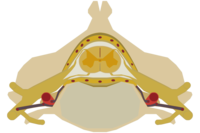
In recent years we have become very interested in the ever-increasing evidence there are large complex neural networks outside the brain and autonomic nervous system. The main ones are in the intestine and the heart. These systems are so complex and well organized that some people have talked about us having a “brain” in the heart and another in the intestine. This may be a bit of an over-statement. For instance the cerebellum at the back of the brain is large and highly complex, but is so arranged that it probably cannot generate conscious experience. That particular trick needs a cerebral cortex that self-organizes, recruits new systems when necessary for some particular task and generates vast oscillations that are modulated by genes and the environment.
Now new research has shown that the spinal cord has some of those same properties that we associate with the cerebral cortex. This groundbreaking work has just been published in the journal Science, and the entire paper is available here.
So why the excitement and interest? It often astonishes me how many students who come to my lectures seem not to have a curiosity gene. And there is so much about which we should be curious. Despite the billions spent on research there is still a great deal about the human body that is not understood at all. Not small esoteric things, but huge questions.
For instance how can some people think and communicate even if most of the brain is destroyed by disease? On the other hand some people are incapacitated by the smallest lesion. I’ve taught neurology for years, in particular the art of neurological examination. I was trained by some of the best in the world, so I know how to look for subtle neurological signs. Yet I’ve seen a great many inexplicable things: I saw someone come to autopsy who had no neurological signs, but had a tumor occupying more than half of the dominant hemisphere of the brain.
Here’s another puzzle: we don’t know how humans are able to move. Our muscles are controlled by thousands of nerve cells in the brain, spinal cord and peripheral nervous system. This entire complex system must work as a whole in order to successfully generate a single motion. Yet how quickly do most children learn to stand and walk. The new research has shown that the spinal cord is not a passive signal conductor, but has instead shown that spinal neurons, while engaged in the network activity underlying movements, show irregular firing patterns similar to those seen in the cerebral cortex. Even if we repeat a certain motion with high accuracy, the nerve cells involved never repeat their activity patterns. Just the same as happens in the cerebral cortex.
This is yet more evidence to suggest that “thinking” does not only go on in the brain. It makes sense to think of the major systems – heart, intestine and spine – as key components of the subliminal, pre-conscious mind. Some people like the term subconscious, but that runs into the confusing problem of mixing up the terms subconscious and unconscious.
I talk about some of these differences and how to work these different parts of yourself in the book and CD series Healing, Meaning and Purpose.
Chiropractors have been telling us for years that the spinal cord is a lot more than just a relay system. It looks as if they may have been correct.
If you are interested in following up on my comments about what it takes for a neural network to generate conscious experiences, you may be interested in having a look at my review of the excellent new book Rhythms of the Brain by Gyorgy Buzsáki. and
Of Horses and Hearts
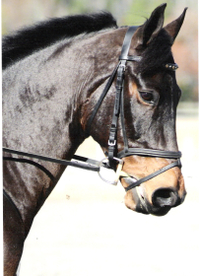
I live on a horse farm, so I see the interactions between horses and between horses and humans almost every day. Horses are extraordinarily sensitive creatures with their own sets of emotions and highly developed sense of propriety. They are also very good barometers for the emotional states of humans. We could not work out why one of the horses at another farm was consistently bratty with one particular rider, until we discovered that she was high on ecstasy. Her “energy” was a mess and it totally confused the horse.
On the other hand, horses are often used therapeutically with emotionally and mentally ill and handicapped children and adults. My old horse – Mr. Black – was a perfect therapy horse: nothing ever fazed him.
There is now some more research demonstrating one of the possible mechanisms by which horses may be able to pick up on a rider’s emotional states.
I have a couple of times mentioned some of the work being done at the Institute of HeartMath in California.
Some of their work is controversial, but most has been quite convincing.
I have for several years now been interested in the phenomenon of Heart Rate Variability (HRV). As the name implies, it is a measurement of the beat-to-beat variation in the heart’s rate. Alteration (primarily reductions) of HRV has been reported to be associated with various pathologic conditions like hypertension, hemorrhagic shock, and septic shock. It has found its role as a predictor of mortality after an acute myocardial infarction. It may also be disturbed in major depressive disorder.
I knew about it from the days that I worked at the National Heart Hospital in London, but Roger Callahan – the discover of Thought Field Therapy (TFT) – has been able to show that TFT is one of the few therapies that can normalize it. We also discussed it in the context of the vagal nerve and compassion.
From a pilot study by the Institute and Dr. Ellen Gehrke from Alliant University it appears that a horse’s heart rhythms reflect their emotional state and can respond to the emotional state of a nearby human. When in contact, a horse’s heart rate may mirror a human’s emotions, implying a close unspoken form of communication between the two.
The study took place at Dr. Gehrke’s ranch in San Diego, where electrocardiogram (ECG) recorders were placed on her and also on four of her horses. All five were monitored during a 24-hour period in which the horses were under a variety of normal conditions and activities such as eating, grooming or being alone. Measurements were also done while they were being ridden and accompanied by Dr. Gehrke.
The ECG recorders projected increased coherent HRV patterns for the horses during times of close, calm contact between them and Dr. Gehrke. Coherent HRV patterns have been shown to be the result of positive emotions and facilitate brain function.
Dr. Gehrke said, “Horses receive information from body language and give feedback. They don’t think very much, they feel. They are very emotional and honest. They also have a powerful impact on your sense of self and ability to lead.”
I don’t think that cardiac coherence is the whole story. They also respond to micro-movements – small movements of the legs, arms and trunk that are all but imperceptible to humans – and we have seen many of them sense events at long range. I travel a great deal and come home at odd times. But several witnesses saw Mr. Black start to become very excited 20-30 minutes before I would arrive home. In England, Rupert Sheldrake has amassed a considerable body of evidence to support those observations.
Nonetheless, this is very important research and I shall be very interested to see the final version once it has been subject to peer review.
“There is something about the outside of a horse that is good for the inside of a man.”
–Sir Winston Churchill (English Statesman, British Prime Minister, 1940-1945 and 1951-1955, and, in 1953, Winner of the Nobel Prize in Literature, 1874-1965)
“A man on a horse is spiritually as well as physically bigger than a man on foot.”
–John Steinbeck (American Writer and, in 1962, Winner of the Nobel Prize in Literature, 1902-1968)
“Wherever man has left his footprint in the long ascent from barbarism to civilization we will find the hoofprint of the horse beside it.”
–John Moore (American Man of Letters and Former Archivist and Librarian for the State of Tennessee, 1858-1929)
“I’d rather have a goddam horse. A horse is at least human, for God’s sake.”
–J.D. Salinger (American Writer, Student of Advaita Vedanta and Recluse, 1919-)
And finally:
“In my opinion, a horse is the animal to have. Eleven-hundred pounds of raw muscle, power, grace, and sweat between your legs – it’s something you just can’t get from a pet hamster!”
–Unknown Author






